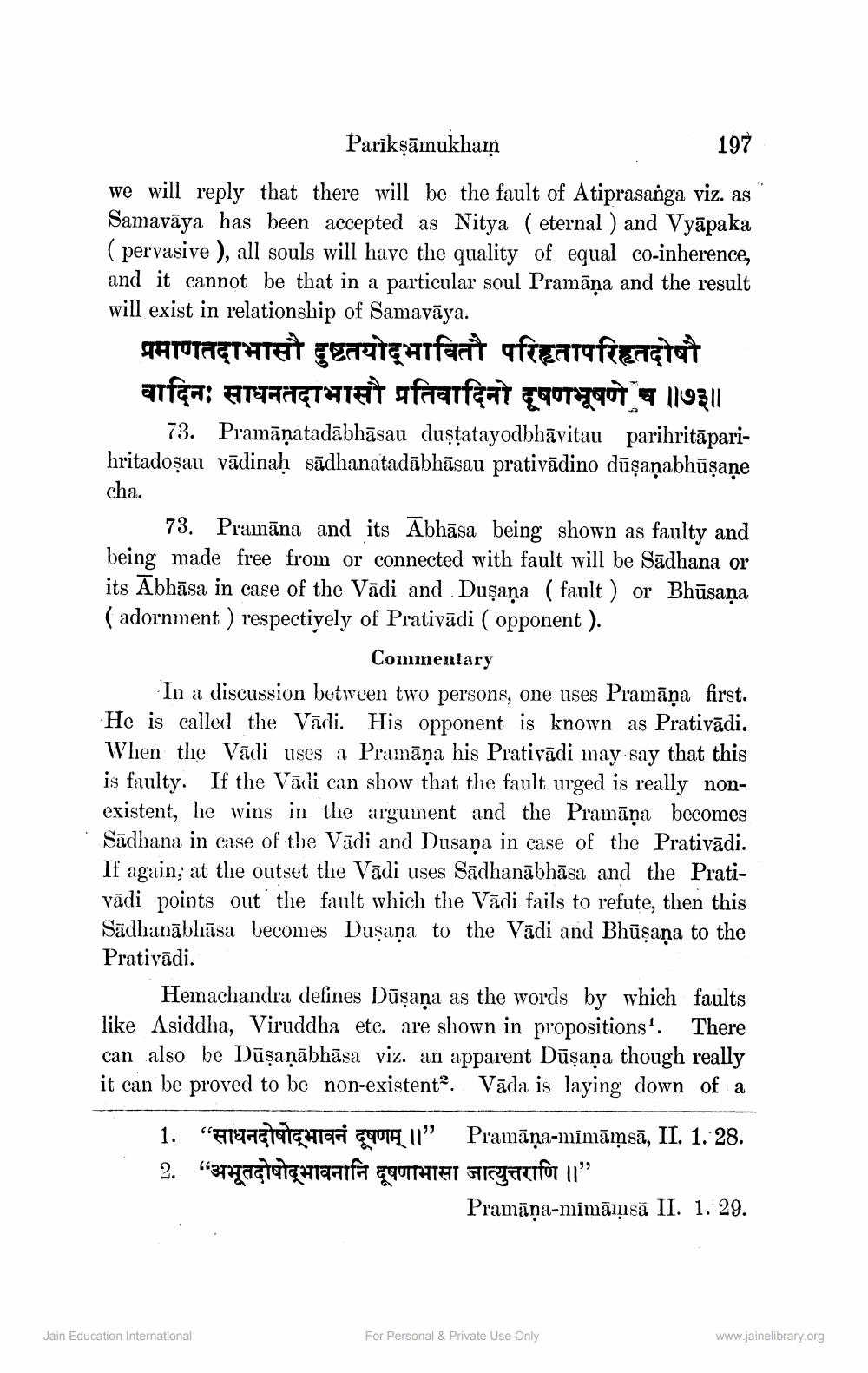________________
Parikṣāmukham
197
we will reply that there will be the fault of Atiprasanga viz. as Samavāya has been accepted as Nitya (eternal) and Vyāpaka (pervasive), all souls will have the quality of equal co-inherence, and it cannot be that in a particular soul Pramaņa and the result will exist in relationship of Samavaya.
QATOTAĘTATEN GEADìgenfant aftea19ftzaętał anfça: aranagımıet afaarfęzì gqonqqo| = ||93||
73. Pramāṇatadabhasau duṣṭatayodbhāvitau parihritaparihritadoṣau vadinaḥ sadhanatadabhāsau prativadino dūṣaṇabhūṣaṇe cha.
73. Pramana and its Abhasa being shown as faulty and being made free from or connected with fault will be Sadhana or its Abhasa in case of the Vadi and Duṣaṇa (fault) or Bhusaṇa (adornment) respectively of Prativādi ( opponent).
Commentary
In a discussion between two persons, one uses Pramāņa first. He is called the Vadi. His opponent is known as Prativādi. When the Vadi uses a Pramāņa his Prativādi may say that this is faulty. If the Vadi can show that the fault urged is really nonexistent, he wins in the argument and the Pramana becomes Sadhana in case of the Vadi and Dusana in case of the Prativādi. If again, at the outset the Vadi uses Sadhanābhāsa and the Prativadi points out the fault which the Vadi fails to refute, then this Sadhanābhāsa becomes Duşana to the Vadi and Bhuṣaṇa to the Prativādi.
Hemachandra defines Duṣaṇa as the words by which faults like Asiddha, Viruddha etc. are shown in propositions1. There can also be Duṣaṇābhāsa viz. an apparent Duṣaṇa though really it can be proved to be non-existent. Vada is laying down of a
1. “anungtaigenari q”
2. “ अभूतदोषोभावनानि दूषणाभासा जात्युत्तराणि ॥”
Jain Education International
Pramāṇa-mīmāmsā, II. 1. 28.
Pramāṇa-mimāmsä II. 1. 29.
For Personal & Private Use Only
www.jainelibrary.org




